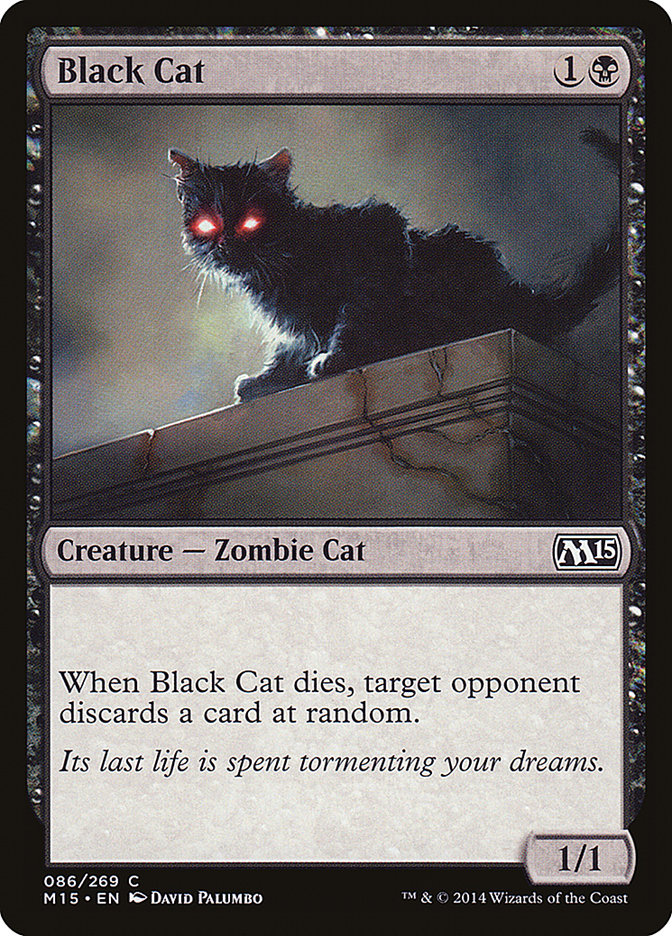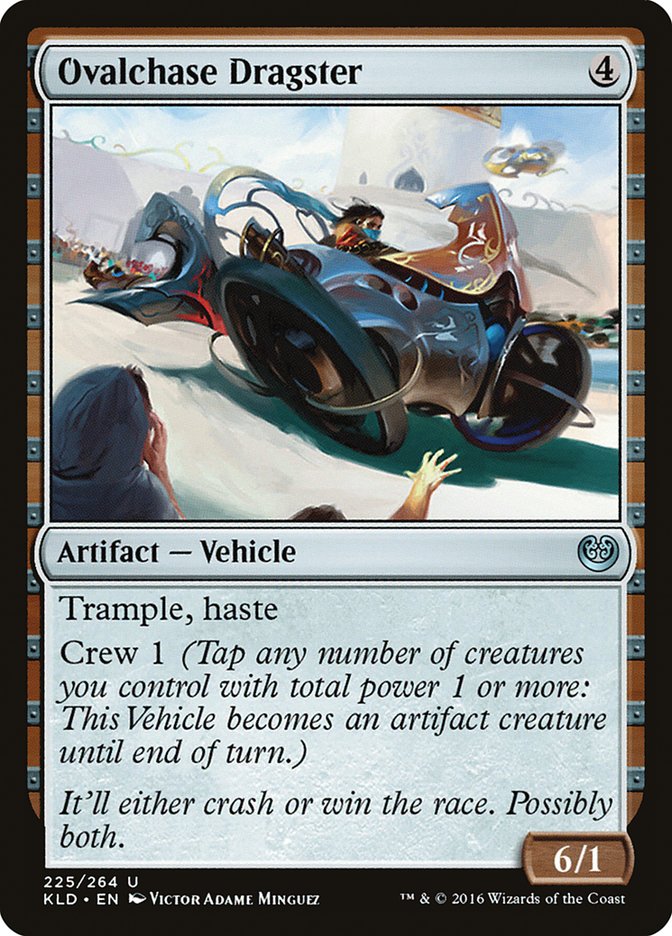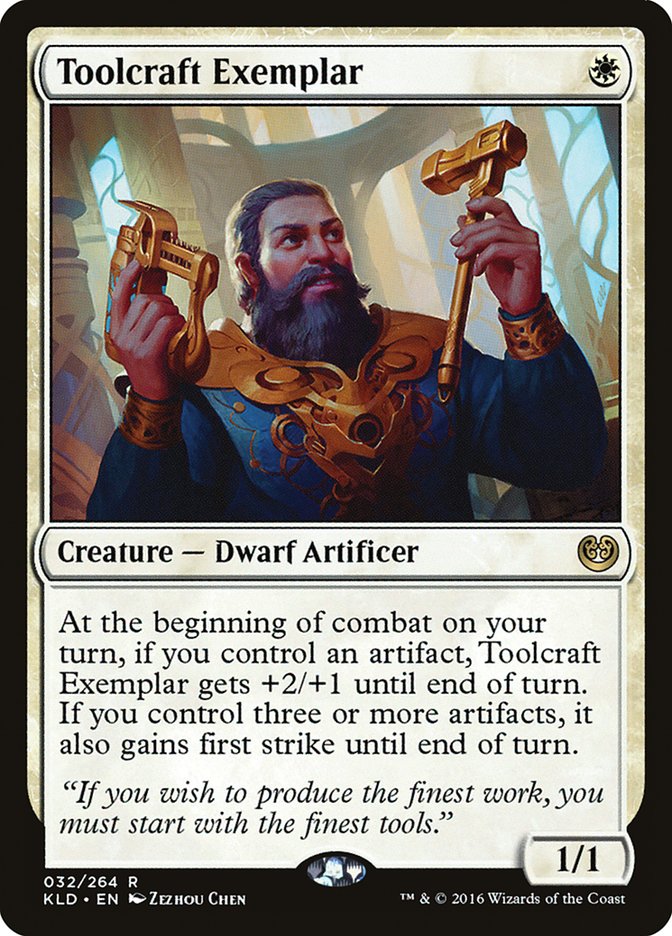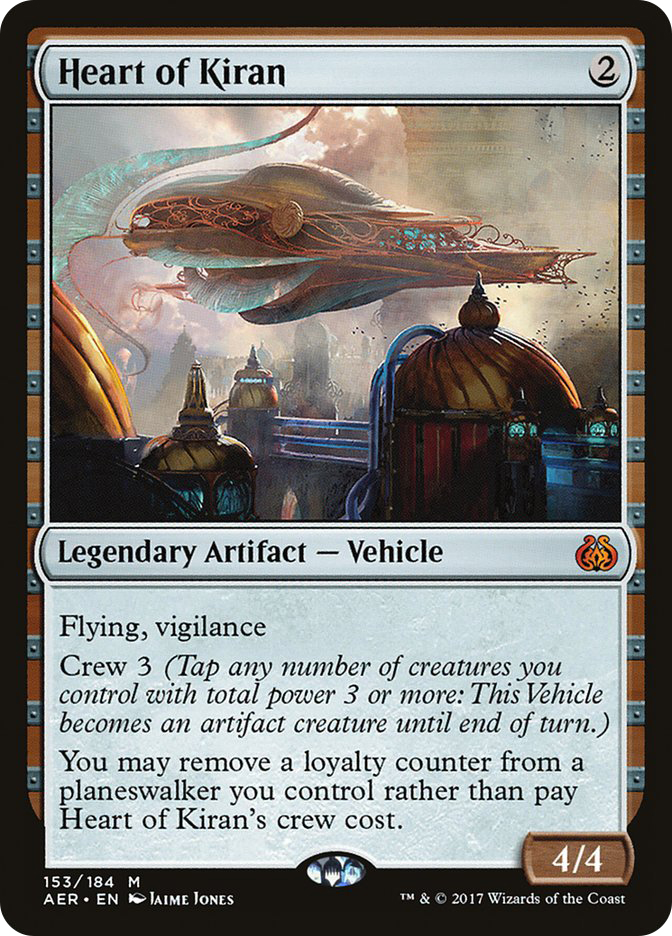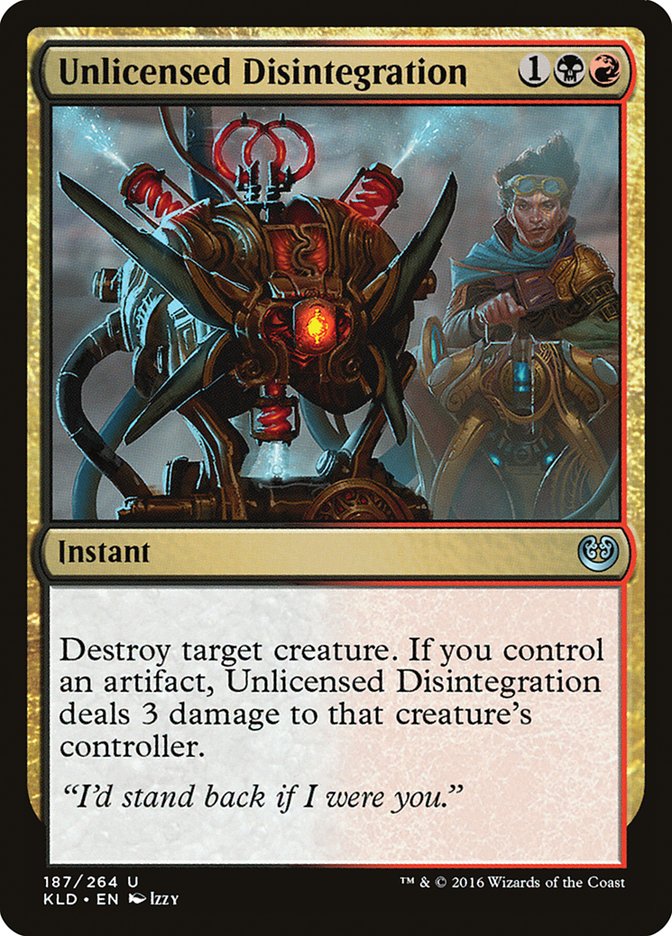The winds of change have come and gone, passing over our dear Standard format and leaving them irrevocably…the same? All right, so the Standard bans many of us were hoping for didn’t happen. Personally, I am happy with the decision to let both Four-Color Saheeli and Mardu Vehicles hang around a while longer, and no, it’s not because I’ve been playing either of those decks. But regardless of how I feel about it, or how you feel about it, this Standard format is the only one we have until the release of Amonkhet, and it’s time to ask ourselves a very important question:
What does it take to hang with the best decks in Standard right now?
Last weekend at Grand Prix New Jersey, I elected to play B/G Constrictor over either of the two decks widely regarded as the best decks in Standard. I didn’t play B/G because I thought it was well-positioned or because I thought my build was fundamentally better than previous versions; I played it because, despite working with Four-Color Saheeli for almost two weeks, I was not at all confident in my ability to do well with that deck. So I took the deck I knew, skewed it to handle the Four-Color Saheeli menace, and hoped for the best. Here’s what I registered:
Creatures (26)
- 4 Catacomb Sifter
- 3 Verdurous Gearhulk
- 4 Servant of the Conduit
- 4 Winding Constrictor
- 3 Rishkar, Peema Renegade
- 4 Glint-Sleeve Siphoner
- 4 Walking Ballista
Planeswalkers (2)
Lands (23)
Spells (9)

Ultimately, in the twelve matches of Magic I played in the Grand Prix, I went a great 3-0 against Four-Color Saheeli and a disappointing 4-5 against Mardu Vehicles. That’s right: in twelve Grand Prix matches, I played against a whopping two different decks. Whether you love or hate this lack of diversity, if you want to play competitive Standard right now, you need to be ready for it. I don’t believe that Four-Color Saheeli and Mardu Vehicles are the only decks that stand a chance right now, so let’s take a look at what is required to take them down.
Besting Four Varieties of Cats
The way I see it, Four-Color Saheeli has four different Cats to throw at you, and you need to be ready for all of them. No, I’m not referring to the fact that they play four copies of Felidar Guardian. Instead, what I mean is that the Four-Color Saheeli deck has four distinct and strong gameplans, four different Cats ready to come after you and steal your dignity and your match points. Being really good at catching and stopping one of the Cats is not enough; no, you need to be able to deal with each and every Cat if you want a positive win-rate against Four-Color Saheeli.
One Cat, two Cat, blue Cat, Black Cat.
The first Cat that’s going to come after you is Fast Cat. Fast Cat is the scary one, the one you hear whispers of between rounds. Fast Cat made his living stealing lunch money back in high school and hasn’t turned away from the life of crime ever since. A game won by Fast Cat is over before you know it. Turn 2, your creature gets blown apart by a Harnessed Lightning. Turn 3, they deploy a Saheeli Rai that you can’t effectively threaten. Turn 4, they show you the Felidar Guardian and you’re back to shuffling. You just got Fast Catted.
Fast Cat is a bully, and just like any bully, you beat him by standing up to him. After getting pushed down once or twice, it’s natural to want to do whatever you can to avoid that pain again. So you find yourself leaving up your Grasp of Darkness or your Harnessed Lightning on turn 3 or 4, confident that at the very least you won’t be losing this turn. This is giving in to the fear and letting Fast Cat steal your match equity. Most of the time, you want to fearlessly tap out, stare Fast Cat in the eye, and tell him you’re not afraid. Sometimes he’ll knock you down, sure, but other times they won’t have it and you will be able to proceed to dealing with the other three cats from a defensible position.
Rule #1 of playing against Four-Color Saheeli: you need to prioritize having a battlefield presence. When faced with the choice of leaving up a combo answer or getting on the battlefield, it’s almost always right to get on the battlefield. This is why cards like Walking Ballista that let you do both are so good against Four-Color Saheeli. But even without a card like Walking Ballista in hand, it’s better to tap out and accept the risk of a quick loss than sit back and accept the certainty of a slow one.
After turn 4 or 5, Fast Cat is no longer a concern. Now we enter the realm of Fat Cat. Fat Cat is the great value game that Four-Color Saheeli has. As Standard has twisted and turned, this value game has taken many different forms. The bulk of it has always been with creatures that replace themselves: Rogue Refiner, Felidar Guardian blinking Oath of Nissa, and so on. Recently, the rest of the value package has taken the form of Chandra, Torch of Defiance and
This pile of value cards isn’t that scary on its own, but here’s the thing: Fat Cat doesn’t work alone. No, he works in tandem with Slow Cat. Slow Cat is a clever girl. She bides her time, waiting for the perfect time to strike. She knows Fat Cat probably can’t win the game on his own, but she also knows that Fat Cat is exceedingly good at whittling away the opponent’s resources until at last the time is right for her to strike. Her strike takes many forms, sometimes a careful hoarding away of a Felidar Guardian and a Saheeli Rai until the time is right to unleash the fearsome combo, sometimes a desperate topdeck of Oath of Nissa finding Felidar Guardian blinking Oath finding Saheeli Rai, ending the game.
If you want to fear something, fear Slow Cat. You don’t have to, but it won’t hurt. At the very least, you must respect Slow Cat. This is the stage of the game where it is critically important to always have an answer to the combo up. Fat Cat will try hard to lure you into a spot where you feel like you are forced to commit all your mana to deal a crippling blow to their value game. On turn 4, the mathematically right play is to hope they don’t have the combo and show no fear. On turn 12, hoping they don’t have it is a losing proposition. The cards like Walking Ballista and Implement of Combustion that were so strong against Fast Cat are almost worthless as security against Slow Cat, as she plays in a stage of the game where mana is not a problem. Answering these problem permanents and proceeding to combo is not generally an issue. No, we need layers of security, including bona fide instant-speed answers in our hand.
And in the background the whole time, working from the shadows, is Ninja Cat. Ninja Cat doesn’t play well with the others. She doesn’t want to combo kill you or buy time for others to combo-kill you. No, she wants to end you her own way, by sneaking in a little damage here and a little damage there. Whenever Four-Color finds an opportunity to attack for three with a Rogue Refiner, that’s Ninja Cat at work. Chandra, Torch of Defiance comes down, exiles a card to deal two to you, and then Oath of Chandra triggers in the end step, dealing another two: that’s some of Ninja cat’s finest work. Whirler Virtuoso makes three Thopters on your turn, which proceed to attack for nine over the next three turns. Ninja Cat wins again.
The solution to all these Cats that suggests itself to me is simple: hit them hard and hit them early. Our game plan is to aggressively develop our battlefield early and then transition to a game where we ride that developed battlefield to victory, supplementing it when we can while making sure to leave interaction up as soon as we reach the mid-game. We hope to dodge Fast Cat when he comes to pounce on us and have a battlefield presence large enough to make the work of the other Cats very difficult. Each of the other three Cats relies on planeswalkers to some extent, and ensuring we have a developed battlefield makes threatening planeswalkers very easy.
The key to this quick and aggressive battlefield development is two-drops. Take a look at the list I played in New Jersey. Not only did I have sixteen true two-drops in my maindeck, I sideboarded another three, solely because I thought respectable two-mana threats were so important in the Four-Color Saheeli matchup. Classic combo hate like hand disruption and more efficient interaction is nice and important, but the true key is playing cards that allow you to grow your battlefield at the proper rate to make life difficult for those pesky Cats.
The Mardu Traffic Signal
Enough about Cats. Let’s turn our attention to the racetrack.
A match against Mardu Vehicles is an act in three stages. Conveniently, three is also the number of lights used on traffic signals. These days, everyone knows that green means “go,” yellow means “slow down,” and red means “stop.” Well, almost everyone. The Mardu traffic signal has the same three stages, but the flow between them isn’t nearly as predictable as in a real traffic light, and they are not color-coded for our convenience. Nonetheless, learning how to prepare for and identify each stage will up your Mardu Vehicles win rate considerably.
The first stage to worry about is the green light, the go stage. This is where Mardu Vehicles wants to be at all times, and where you never want to be. Essentially, whenever Mardu Vehicles has good attacks, the game is in the go stage. This stage can look different at different points in the game. Early, it often looks like a Heart of Kiran crewing up, or maybe a Toolcraft Exemplar getting in for three points. Later, it will look like a Gideon, Ally of Zendikar crashing in for five points alongside said Heart of Kiran or Toolcraft Exemplar. Letting the game stay in the go stage for too long is a sure recipe for losing to Mardu Vehicles.
Unfortunately, the game tends to start in the go stage. Mardu Vehciles has the market cornered on efficient, cheap creatures and it’s virtually impossible for any other deck to match them in that department. Cheap removal is of paramount importance in making sure the early-game go stage doesn’t inflict too much damage. Heart of Kiran and Toolcraft Exemplar are the cards I clue into here. A game where either of these cards connects twice is very hard to win. In fact, I’m not sure I’ve ever won a game where the same Heart of Kiran hit me for eight points.
Once we hit turn 4, we often have transitioned out of the go stage and into the yellow light stage, the yield stage. Here, attacking comes at a real cost for the Mardu Vehicles player and doesn’t often translate into damage being done. We have dealt with their pesky evasive Vehicles, eliminating their sources of free damage. They often have attacks that aren’t bad, but aren’t particularly good either. Scrapheap Scrounger can trade for one of our creatures and then return to the battlefield, but it’s generally unclear that this is the best use of their mana. Maybe a Gideon can plus and come at us, but we have a good chump blocker or two, so no real damage is done. Attacks along these lines are the norm for the Mardu Vehicles side, and on our side, turning our creatures sideways leaves us facing a mighty counterattack and is a scary proposition.
The yield stage is, at its core, a stalemate. And, to be honest, it’s not one that is good for us. This is the point in the game where Mardu does a bunch of small, pesky things. They crack the Clues they had lying around from early-game Thraben Inspectors. They deploy Gideon and start making Knights. They whittle away at our battlefield with Scrapheap Scrounger trades. They grow a Walking Ballista or deploy one with a full turn’s worth of mana.
It’s great that we’re not taking significant damage anymore, but we need to find a way to turn the light full-on red before Mardu catches its second wind. To do that, we need to drastically outsize their Mardu battlefield, either in depth or width of creatures. Four toughness is a magic number for us, and our main goal should be to find ways to pressure Gideon and other planeswalkers without leaving us vulnerable to counterattack. Once we achieve that, we have reached the red light stage.
The red light stage is when Mardu is on the back foot. They are scrambling to protect their planeswalkers and quickly running out of Thraben Inspectors to chump block with. We get to attack and attack hard, seeking to end the game before they manage to turn the light back to yellow or green. Crushing their planeswalkers is the first order of business, but afterwards their life total will soon follow. Gameplay here is simple enough: attack as hard as you can while making sure to not give them outs to draw Unlicensed Disintegration and sneak a win they don’t deserve.
The tools Mardu Vehicles uses to change the color of the light are simple to understand yet hard to beat. Primarily, they rely on planeswalkers and removal. Gideon, Ally of Zendikar is a hard planeswalker to stop from having good attacks, and if you somehow manage it, he will just bide his time and develop the battlefield with Knight tokens or suddenly transform an underwhelming battlefield to a fearsome one at the drop of an emblem. I mentioned that four toughness is a key number against Mardu; one of Gideon’s great strengths is the ability to increase that key number to five in the middle of the game.
But removal is the really scary color-changing device Mardu Vehicles uses. Unlicensed Disintegration is a huge beating. Play with this card in the forefront of your mind at all times against Mardu. Disintegration has a good claim at being the swingiest card in Standard right now, able to drastically shift the texture of a game with ease. Single, large threats are a liability against Mardu, solely because of the power of Unlicensed Disintegration.
Mardu Vehicles is a deck designed to thrive in both the go and the yield stages of the game. The transformative sideboarding plan into a heavy planeswalker deck that has become common really highlights this, as the goal of the post-sideboard planeswalker version of the deck is to live in the yellow. The key to beating Mardu is to understand that the deck is very good at dancing between attacking hard and biding its time in stalemate, but not great at recovering once on the back foot.
You beat Mardu Vehicles by polarizing your gameplan. Forget all about yellow meaning “slow down;” for you it truly does mean “go very quickly.” You want to defend well when they have the advantage and take as little damage as possible from their early game. But once their aggression ceases, you want to replace it with your own. Don’t give them time to fiddle around with planeswalkers and Clues! Strike forth with strength at the absolute earliest opportunity.
The overlap between this strategy and the two-drop overload I recommend for beating Four-Color Saheeli is what gives me hope for Standard yet. Lower your curves and ensure your decks can be aggressive when they need to, and I think these two titans of Standard are eminently beatable.


